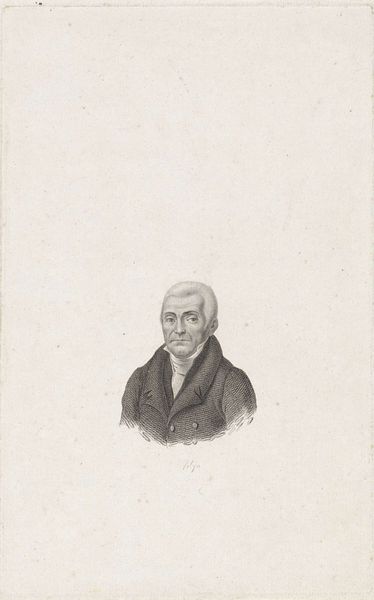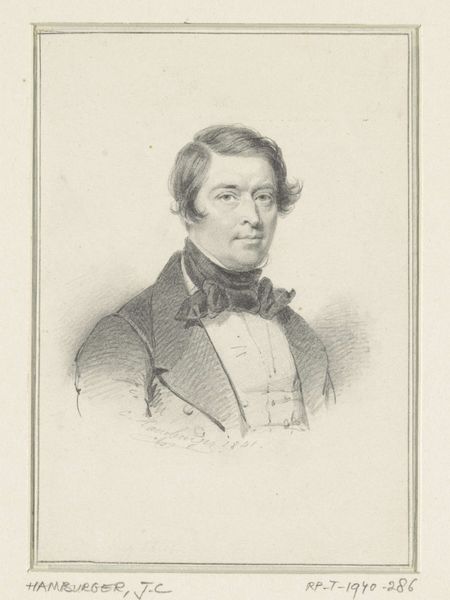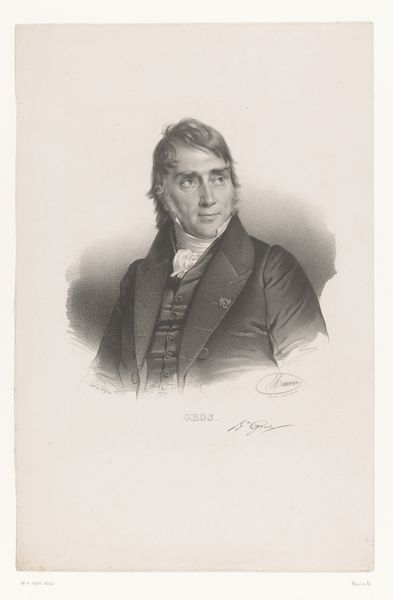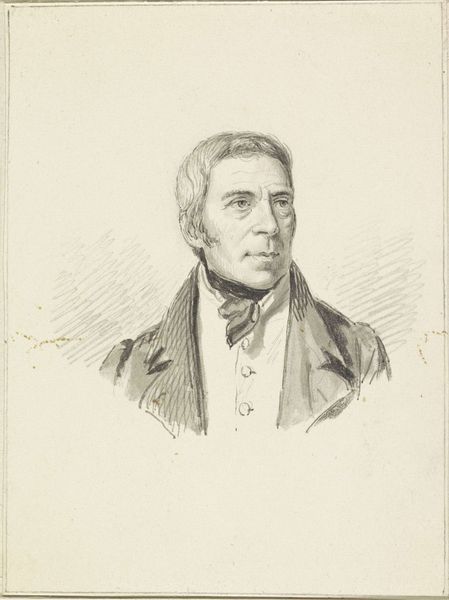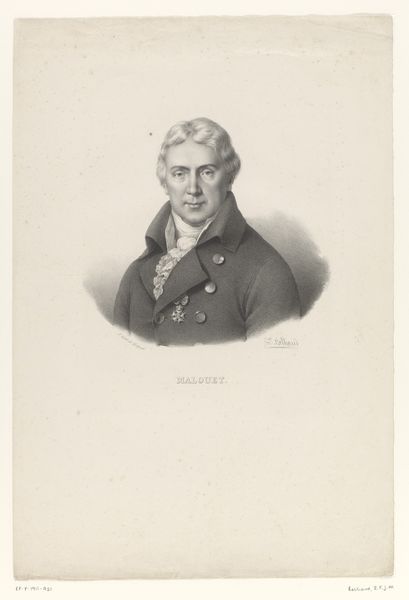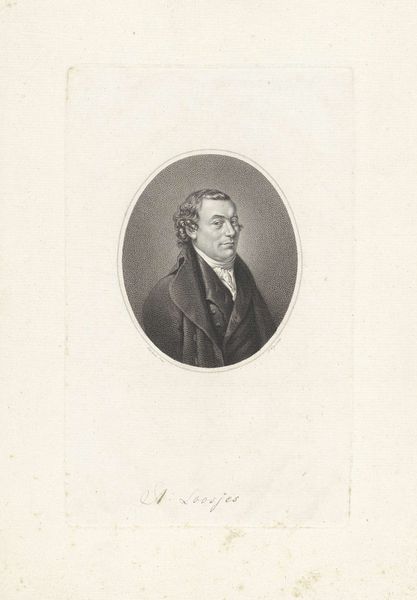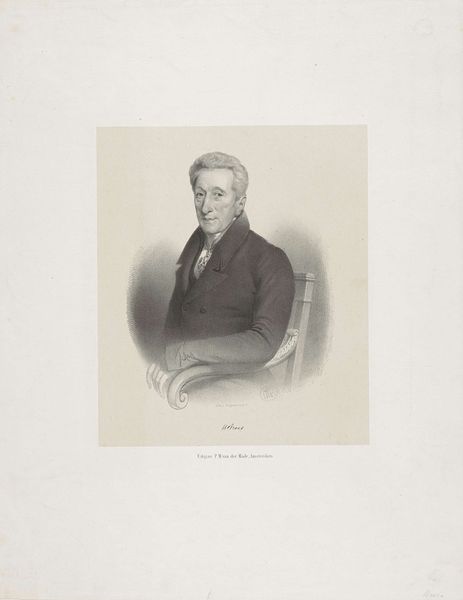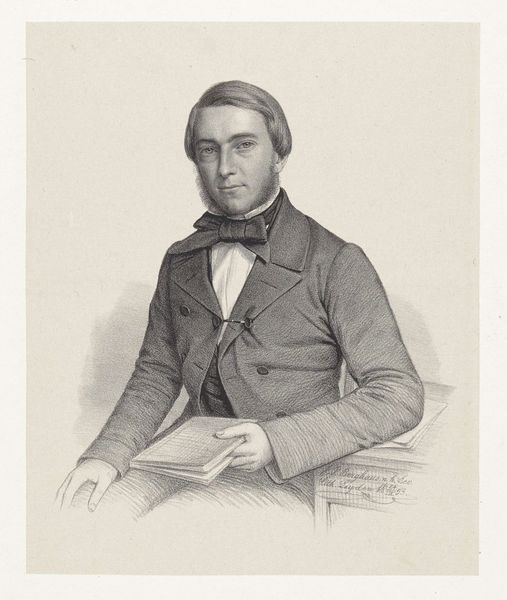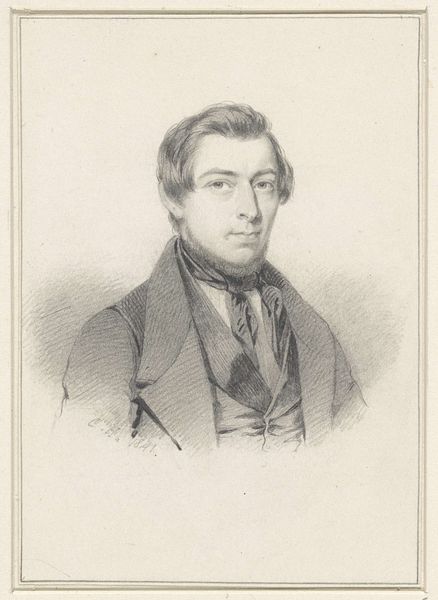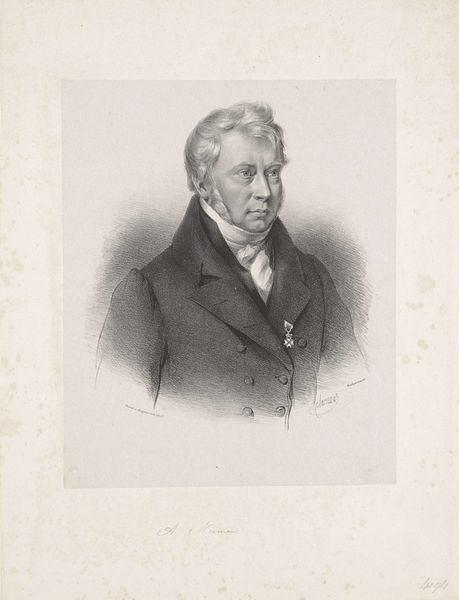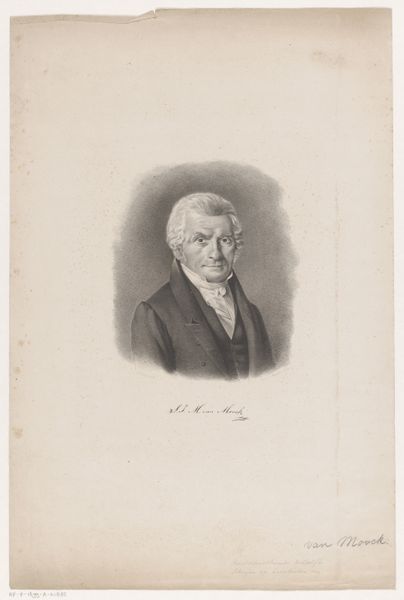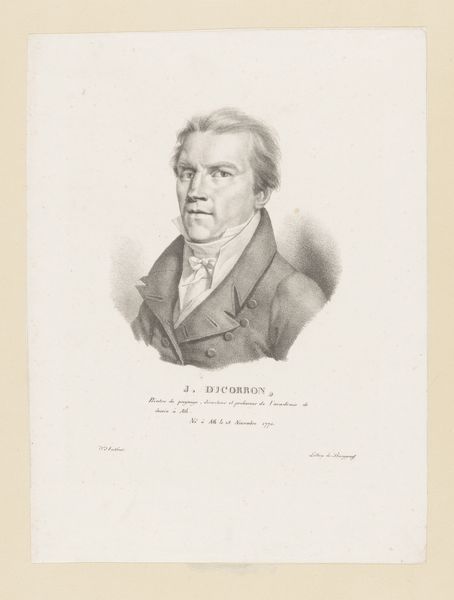
print, engraving
#
portrait
#
neoclacissism
# print
#
caricature
#
figuration
#
line
#
engraving
#
realism
Dimensions: height 405 mm, width 297 mm, height 562 mm, width 426 mm
Copyright: Rijks Museum: Open Domain
Curator: This is a print dating back to around 1825, titled "Portret Pieter Alexander van Boetzelaer," currently residing at the Rijksmuseum. The artist is Antonis Aloisius Emanuel van Bedaff. What's your immediate take on this portrait? Editor: It’s…reserved. Stern, almost. The tight lines of the engraving create a formal impression. It definitely speaks to a bygone era, with that high collar and powdered wig. Curator: Precisely. And we need to see it within that era. The neo-classical influence is quite clear. Think about the Enlightenment values it reflects: reason, order, a certain sense of duty…This image reinforces the sitter's status and adherence to social decorum, a visual representation of power dynamics at play during the period of Dutch aristocracy. Editor: Power conveyed through careful symbolic representation. Even the restrained palette contributes to this idea of decorum and authority. Those meticulous lines convey more than just a likeness; they carry cultural weight, referencing classical ideals of stoicism and virtue. He's gazing slightly off-center; the averted gaze signals a thoughtfulness, perhaps, or a world outside the frame to which he belongs. Curator: That's a crucial point. And if we consider his societal role, it begs the question of how his position shapes our perception of justice and governance, and whether true progress includes disrupting structures that exclude those disenfranchised during this era. It encourages a critique of inherited privilege, of representation and the absence thereof. Editor: The weight of inherited privilege—expressed through symbolic formality and the calculated withholding of direct engagement. Considering van Boetzelaer's stance and attire as representative of status is interesting because clothing in portraits of the time wasn't necessarily true to everyday garments of the people it shows, it had, at least in part, symbolic qualities of class and rank. Curator: Exactly. The way the artist deployed line and shade, the very starkness, reinforces societal barriers, asking us if Neoclassicism in art supported or obscured such structures. Who was deemed worthy of immortalization, and what ideological purposes did these portraits serve? Editor: It gives us insight into the emotional landscapes of previous eras and how symbolic languages change over time. These portraits serve as records, however partial or staged, into the worldviews of a bygone time, which allows us to reflect on present paradigms. Curator: Looking through both socio-political and art historical lenses, the figure emerges, situated in time, yes, but also prompting complex interrogations around issues of power and legacy, that are ongoing. Editor: A symbol etched in time that evokes emotions from the then and emotions of now through the ways symbols live through eras and affect social relations and political status today.
Comments
No comments
Be the first to comment and join the conversation on the ultimate creative platform.
